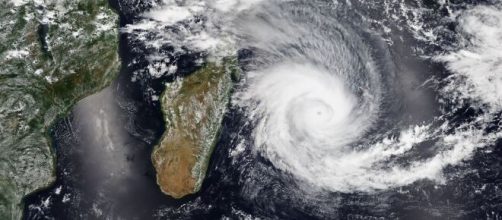Life in Madagascar was in shambles after Cyclone Batsirai struck leaving at least 90 dead. The storm left hundreds of thousands homeless. A local MP indicated the loss of lives could increase further. The disaster led to destruction of homes and damaged many infrastructures. He went on a social media platform to inform that the people of Malagasy are passing through a difficult time. He added that the Ikongo district was one of the first victims of Cyclone Batsirai. It suffered extensive damages to buildings and government offices. He mentioned about the plight of the people who have lost their belongings.
They do not have any roof over their heads, neither do they have any food. He urged the people to "unite and help each other in this difficult time."
Cyclone Batsirai was the second destructive storm to hit Madagascar within a month. Two weeks back, Cyclone Ana killed 55 people.
The storm has aggravated the problems for Madagascar
Madagascar is an island nation. Its population is around 30 million and it has been struggling to come to terms with food shortages. This is because of a severe drought. Mananjary is a city that witnessed large-scale destruction with entire neighborhoods flattened. A local doctor did not have medicines or clean bandages to treat injured people. World Food Programme (WFP) admits to the gravity of the situation.
In its opinion, the extreme weather event led to the loss of many more crops. Lisa Mara Lang is the Head of supply chain for Madagascar at the WFP. She says humanitarian agencies were aware of the miseries of the people. They are working alongside authorities to provide necessary relief after assessing the extent of the damage and the needs of the population. It could take time to get a fuller picture.
Cyclone Batsirai was the second major storm in two weeks
Cyclone Batsirai brought strong winds and rain to Madagascar. Gusts of 146 mph winds and high waves hit the coastal areas. Initial reports mention total destruction of many villages with very limited travel options. Batsirai struck Madagascar as it was reeling from Tropical Storm Ana.
Areas in Mananjary faced loss of power with no electricity, as well as disruption of water supply. The authorities had converted schools and churches to evacuation centers, but the storm blew away the roofs. Environment Minister Vahinala Raharinirina confirmed that many villages have disappeared. In the opinion of experts, the destruction unleashed by Cyclone Batsirai could turn out to be several times more than Storm Ana. This can be known only when further details are made available. Officials have requested assistance from the international community.
The role of global warming and climate change in destructive storms
Authorities have already evacuated people from the danger zones, the UN has arranged for rescue aircraft on standby and the WFP has prepared food stocks for distribution to the needy.
However, the WFP feels the recent pattern of destructive storms is the result of a combination of global warming and climate change. These have led to failed harvests, consequent high food prices and insecurity of food in the region. The BBC quotes a senior WFP official saying: "The people of Southern Africa have been on the front lines of Climate extremes for many years now and each passing storm sets them back, resetting the progress made." Those in the know say the frequency of extreme weather events like cyclones will increase because of climate change. Madagascar is trying to recover from the effects of a drought, also blamed on global warming.


